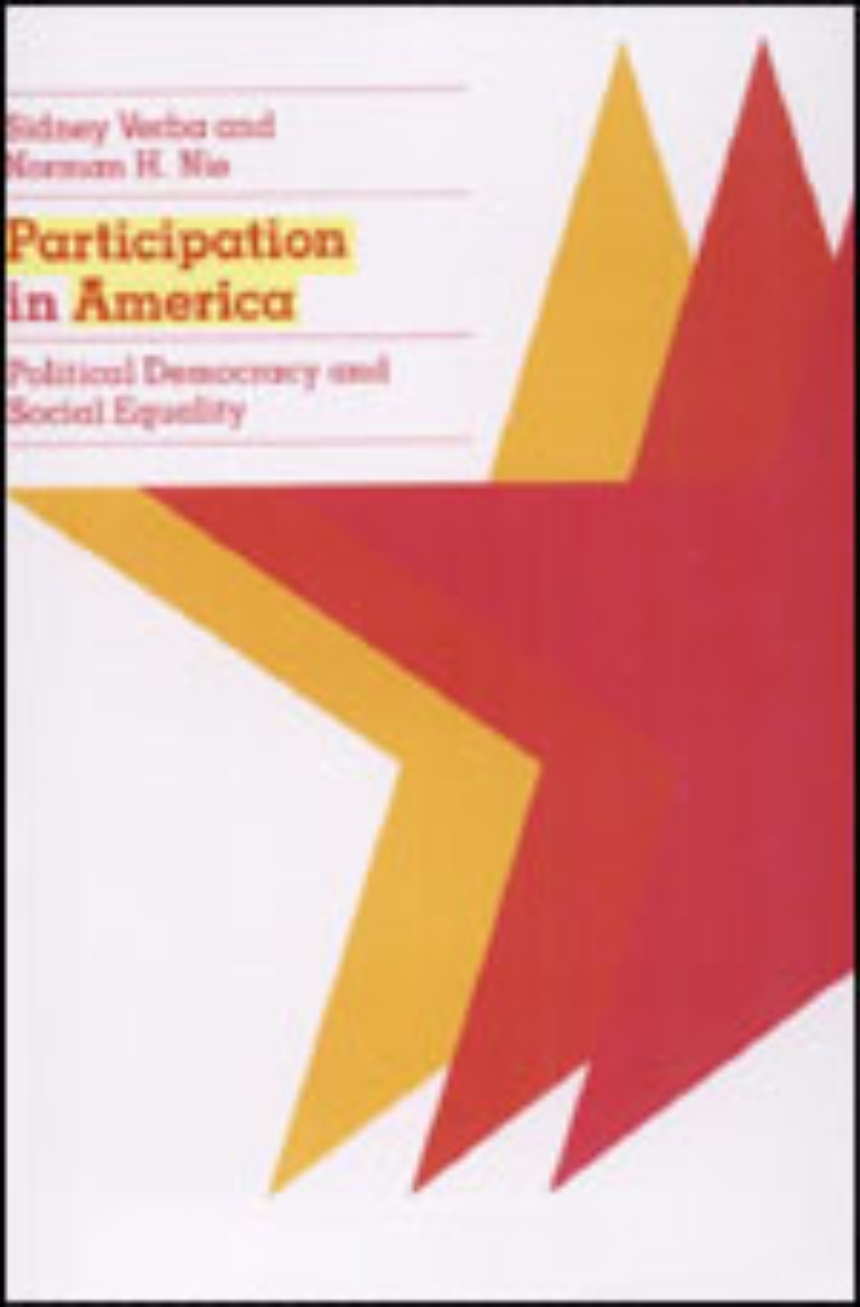Participation in America
Political Democracy and Social Equality
Participation in America represents the largest study ever conducted of the ways in which citizens participate in American political life. Sidney Verba and Norman H. Nie addresses the question of who participates in the American democratic process, how, and with what effects. They distinguish four kinds of political participation: voting, campaigning, communal activity, and interaction with a public official to achieve a personal goal. Using a national sample survey and interviews with leaders in 64 communities, the authors investigate the correlation between socioeconomic status and political participation. Recipient of the Kammerer Award (1972), Participation in America provides fundamental information about the nature of American democracy.
452 pages | 6 x 9 | © 1987
Political Science: American Government and Politics, Political Behavior and Public Opinion
Table of Contents
List of Tables
List of Figures
Preface
1. Participation and Democracy
Part I - The Participation Input
2. Citizen Participation: How Much? How Widespread?
3. The Modes of Participation: An Overview
4. The Modes of Participation: An Empirical Analysis
5. The Types of Participators: Their Orientation to Politics
6. Who Are the Activists?
7. The Rationality of Political Activity: A Reconsideration
Part II - The Process of Politicization
8. Social Status and Political Participation: The Standard Model
9. Participation and the Life Cycle
10. Blacks, Whites, and Participation
11. The Organizational Context of Political Participation
12. Political Parties and Political Participation
13. The Community Context of Participation: A Test of Two Models
14. Participation: The Record of the Past Two Decades
Part III - The Consequences of Participation
15. Participation and Policy Preferences
16. Participation and Preferences: The Role of Social Position and Party
17. Participation and Leader Responsiveness: I. A Measure and Some Data
18. Participation and Leader Responsiveness: II. The Basic Hypotheses
19. Participation and Leader Responsiveness: III. Elaboration and Some Counterhypotheses
20. Participation and Equality: Who Gets What and How?
Appendix A: The Sample Design
Appendix B: Description of the Participation Variables
Appendix C: Descriptions and Frequency Distributions for the Demographic Questions
Appendix D: Descriptions of Attitude and Orientation Measures
Appendix E: The Structure of Participation: Some Validity Checks
Appendix F: Types of Participators: A Cluster Analysis
Appendix G: Some Methodological Notes on Our Use of Parametric Statistics
Appendix H: Description of the Sample of Local Community Leaders
Appendix I: The Computation of Citizen Elite Concurrence Scores
Index
List of Figures
Preface
1. Participation and Democracy
Part I - The Participation Input
2. Citizen Participation: How Much? How Widespread?
3. The Modes of Participation: An Overview
4. The Modes of Participation: An Empirical Analysis
5. The Types of Participators: Their Orientation to Politics
6. Who Are the Activists?
7. The Rationality of Political Activity: A Reconsideration
Part II - The Process of Politicization
8. Social Status and Political Participation: The Standard Model
9. Participation and the Life Cycle
10. Blacks, Whites, and Participation
11. The Organizational Context of Political Participation
12. Political Parties and Political Participation
13. The Community Context of Participation: A Test of Two Models
14. Participation: The Record of the Past Two Decades
Part III - The Consequences of Participation
15. Participation and Policy Preferences
16. Participation and Preferences: The Role of Social Position and Party
17. Participation and Leader Responsiveness: I. A Measure and Some Data
18. Participation and Leader Responsiveness: II. The Basic Hypotheses
19. Participation and Leader Responsiveness: III. Elaboration and Some Counterhypotheses
20. Participation and Equality: Who Gets What and How?
Appendix A: The Sample Design
Appendix B: Description of the Participation Variables
Appendix C: Descriptions and Frequency Distributions for the Demographic Questions
Appendix D: Descriptions of Attitude and Orientation Measures
Appendix E: The Structure of Participation: Some Validity Checks
Appendix F: Types of Participators: A Cluster Analysis
Appendix G: Some Methodological Notes on Our Use of Parametric Statistics
Appendix H: Description of the Sample of Local Community Leaders
Appendix I: The Computation of Citizen Elite Concurrence Scores
Index
